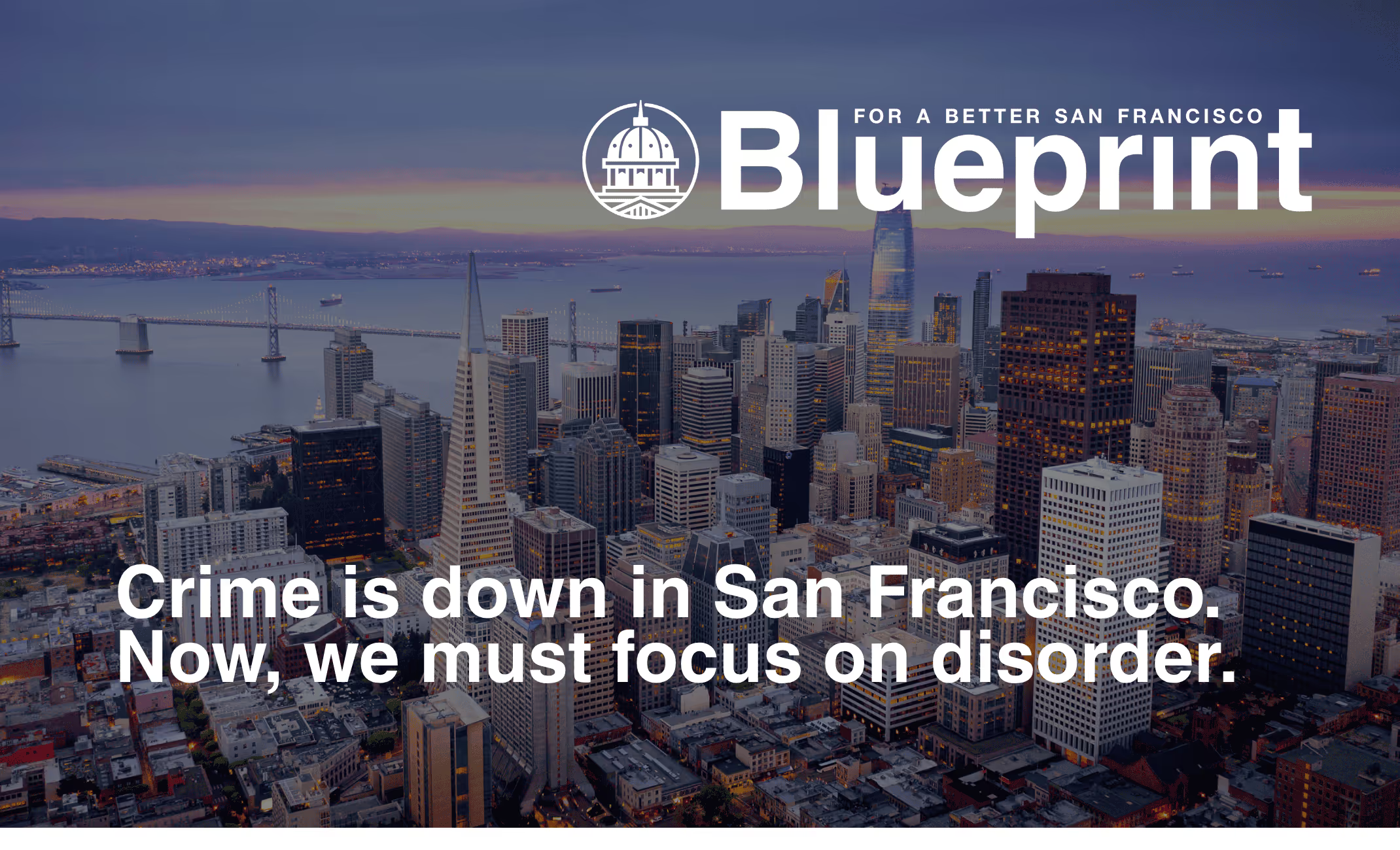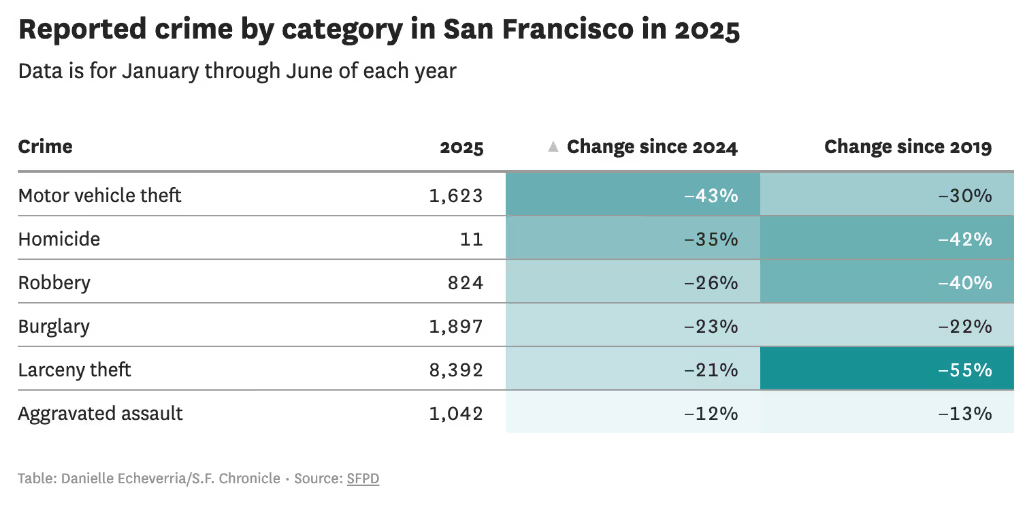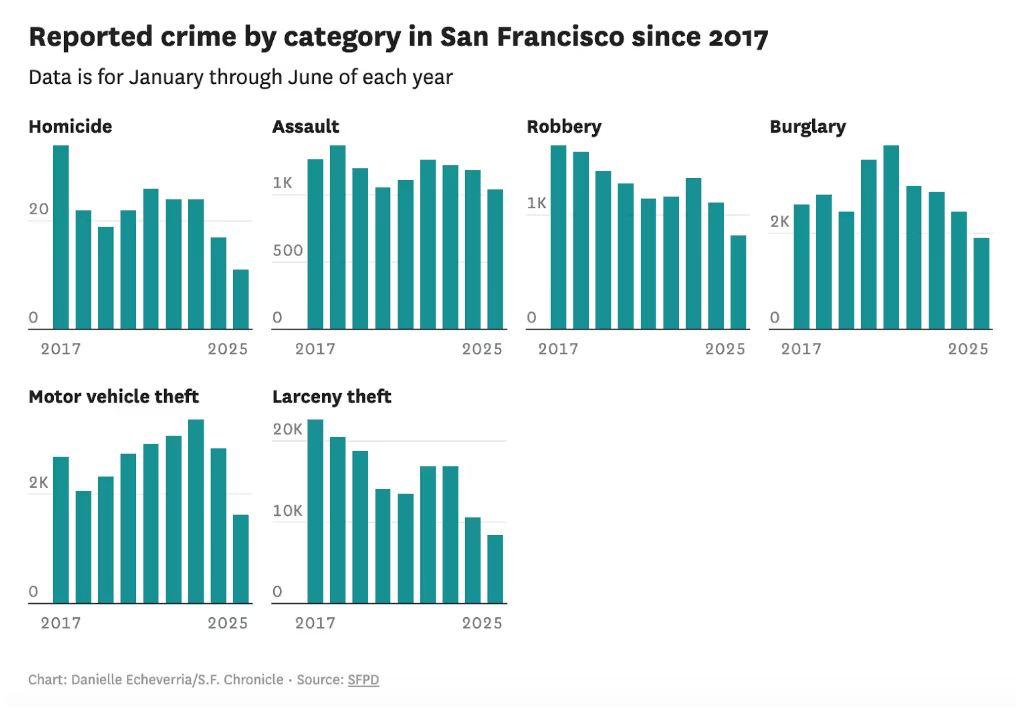
We’ve still got a ways to go in making San Francisco a city that is safe for all San Franciscans. But it’s equally important to acknowledge the progress we are making. Largely thanks to the voters, our city has better people, tools, and resources to effectively address crime. And now, we’re starting to see the dividends of progress: across every major tracked category of crime in San Francisco, crime is down year-over-year.
According to recent data reported in the San Francisco Chronicle and by District Attorney Brooke Jenkins, we’re seeing marked drops in crime, with car break-ins (bipping) and car thefts being the single-two biggest drops year over year, respectively. Let’s be very clear: this is a good thing, and it’s largely thanks to voters like you.

At the start of this decade, we had a District Attorney (Chesa Boudin) who refused to hold criminals accountable, rampant street crime, and judges who were (and are still, in some instances) far too lenient. Since then, voters have made significant changes to how the city approaches crime, from installing a new top prosecutor Brooke Jenkins and approving a ballot measure to increase resources and technology to enforce the law. In certain instances, we still have room to go with ensuring our judges act from impartiality, not ideology. But progress is progress. And it’s worth acknowledging.

High-profile instances of crime like the tragic stabbing of Colden Kimber last weekend, the conditions around our transit stops, and the all-too-familiar person experiencing a mental health crisis on our streets, demonstrates that we still have some ways to go. Addressing crime was just the first step; we must invest in resourcing the right responses - with demonstrably effective outcomes - to the addiction and mental health crises. It’s addressing the twin crises of public safety and disorder that will assure both San Franciscans and those who work, visit, and play in our city that things are, in fact, getting better. And even more importantly - it’s a critical component of fomenting downtown recovery.
We must continue to press forward by adequately resourcing public safety agencies. This includes fully-staffing the police department (which is the most effective way to curb our city’s addiction to police overtime), and working with state-level lawmakers to relax laws that restrict our ability to intervene when someone is in crisis, and to redistribute our existing capacity to the tools we need most (for example, locked treatment beds) to address those in crisis.
The progress we’ve made is just that - progress. But it’s fragile. At a time where getting things right in Blue Cities has never been more important, we cannot afford to let progress obfuscate the lessons from our past.
.png)
.png)
.avif)
.webp)